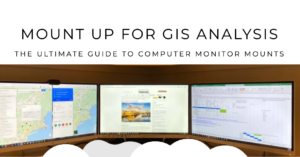Spatial Risk Management: An Introduction
What is Risk Management?
My first professional position after graduating was as a risk officer in a commercial bank, which taught me to always search for risk and manage it in any situation. The process of detecting, assessing, and managing any dangers or hazards that could have a negative impact on a business, community, or individual is known as risk management. It entails using a methodical approach to assessing risks, determining priorities, and implementing solutions to limit the chance and severity of bad consequences.
Understanding Spatial Risk
The term “spatial risk” refers to potential dangers and hazards influenced by geographic variables or locales. Natural disasters such as floods, hurricanes, and earthquakes are examples of spatial risk, as are human-caused dangers such as industrial accidents or terrorism. As a result, spatial risk management is the use of risk management principles and methodologies to manage and mitigate these location-specific hazards.
Importance of Spatial Risk Management
Comprehensive spatial risk management is required to protect lives, property, and the continuity of important services and infrastructure. Decision-makers can prioritize resources, adopt targeted mitigation measures, and improve overall resilience by knowing the spatial distribution of hazards and vulnerabilities.
Key Components of Spatial Risk Management
1. Data Collection and Analysis
a) GIS and Remote Sensing Technologies
Geographic Information Systems (GIS) and remote sensing technologies are critical tools for gathering, analyzing, and visualizing spatial data. They enable decision-makers to comprehend the distribution and dynamics of risks, identify sensitive locations, and assess the efficacy of risk-mitigation techniques.
b) Integrating Data Sources
Effective spatial risk management requires the integration of diverse data sources, including satellite imagery, topographic and land use maps, demographic data, and historical records of hazards and impacts. This integration helps create a comprehensive understanding of the risks and vulnerabilities in a given area.
2. Risk Assessment
a) Hazard Identification
The very first step in risk assessment is to identify potential risks that may harm a particular location. Reviewing historical records, examining spatial data, and talking with experts and stakeholders are all part of determining the likelihood and severity of certain threats.
b) Vulnerability Analysis
Once hazards have been identified, the vulnerability of vulnerable populations, assets, and infrastructure must be investigated. Population density, building materials and construction procedures, and the availability of key services are all aspects considered in this analysis.
c) Impact Assessment
The final step in risk assessment is estimating the potential impacts of identified hazards on people, property, and the environment. This involves combining hazard and vulnerability data to assess the potential consequences of various risk scenarios.
3. Risk Mitigation and Planning
a) Mitigation Strategies
Risk mitigation involves implementing strategies to reduce the likelihood and severity of negative outcomes. These strategies can include structural measures, such as constructing flood barriers or earthquake-resistant buildings, and non-structural measures, such as land-use planning, early warning systems, and public education campaigns.
b) Implementation and Monitoring
Once mitigation strategies have been identified, they must be implemented and monitored effectively to ensure their success. This entails constant examination and revision of strategies based on new data or changing circumstances, as well as cooperation among diverse stakeholders such as government agencies, private sector groups, and local communities.
Spatial Risk Management in Action
1. Case Study: Flood Risk Management
Flood risk management is one form of spatial risk management. Flood-prone locations can be detected using GIS analysis of topography data, historical flood records, and estimates of climate change. Vulnerability assessments can then be performed to establish which populations and assets are most vulnerable. Based on this knowledge, targeted mitigation measures such as building levees, strengthening stormwater management systems, and enforcing zoning restrictions to limit growth in high-risk regions can be adopted.
2. Case Study: Earthquake Risk Management
Another example is the management of seismic risk. Data on fault lines, historical earthquake occurrences, and ground-shaking intensity can be used to construct seismic hazard maps. Vulnerability evaluations can identify structures and infrastructure that are at risk of collapsing or being damaged, as well as densely populated areas. Building rules, land-use planning, and early warning systems can then be implemented to mitigate the potential impacts of future earthquakes.
Challenges and Future Prospects
1. Technological and Data Limitations
While significant progress has been made in spatial data collection and analysis, there are still limitations. The accuracy and effectiveness of spatial risk assessments can be hampered by poor data quality and resolution, particularly in distant or developing locations. Furthermore, the rapid pace of technological change can make it difficult for organizations to keep up with the most recent tools and techniques.
2. Policy and Institutional Challenges
Effective spatial risk management necessitates close collaboration among diverse stakeholders, as well as the incorporation of risk management into larger policy and planning processes. Institutional impediments, such as overlapping tasks, limited resources, and competing goals, might stymie these attempts.
Conclusion
Spatial risk management is a crucial aspect of comprehensive risk management, since it helps to protect people, property, and key infrastructure. Decision-makers can better recognize and mitigate location-specific hazards by leveraging modern technology and data sources. To overcome present limits and assure successful spatial risk management in the future, ongoing investment in technical improvements, data gathering, and institutional capacity-building is required.
Frequently Asked Questions
1. What is spatial risk management?
Spatial risk management is the process of identifying, assessing, and addressing potential threats or hazards that are influenced by geographic factors or locations, such as natural disasters or human-induced hazards.
2. How does GIS and remote sensing contribute to spatial risk management?
GIS and remote sensing technologies are crucial tools for collecting, analyzing, and visualizing spatial data, which enables decision-makers to understand the distribution and dynamics of risks, identify vulnerable areas, and evaluate the effectiveness of mitigation strategies.
3. What are some examples of spatial risk management in action?
Examples of spatial risk management in action include flood risk management, where GIS analysis is used to identify flood-prone areas and implement targeted mitigation measures, and earthquake risk management, which involves creating seismic hazard maps and enforcing earthquake-resistant building codes.
4. What are the key challenges in implementing spatial risk management?
Technology and data limitations, such as data quality and resolution, as well as legislative and institutional issues, such as fragmented roles, limited resources, and competing objectives among stakeholders, are major challenges in adopting spatial risk management.
5. How can spatial risk management be improved in the future?
Improvements Continued investment in technological advancements, improved data collection efforts, and strengthened institutional capacity-building can lead to improvements in spatial risk management. This involves improving stakeholder coordination, including risk management into larger policy and planning processes, and ensuring that organizations are using the most up-to-date tools and practices in the sector.



